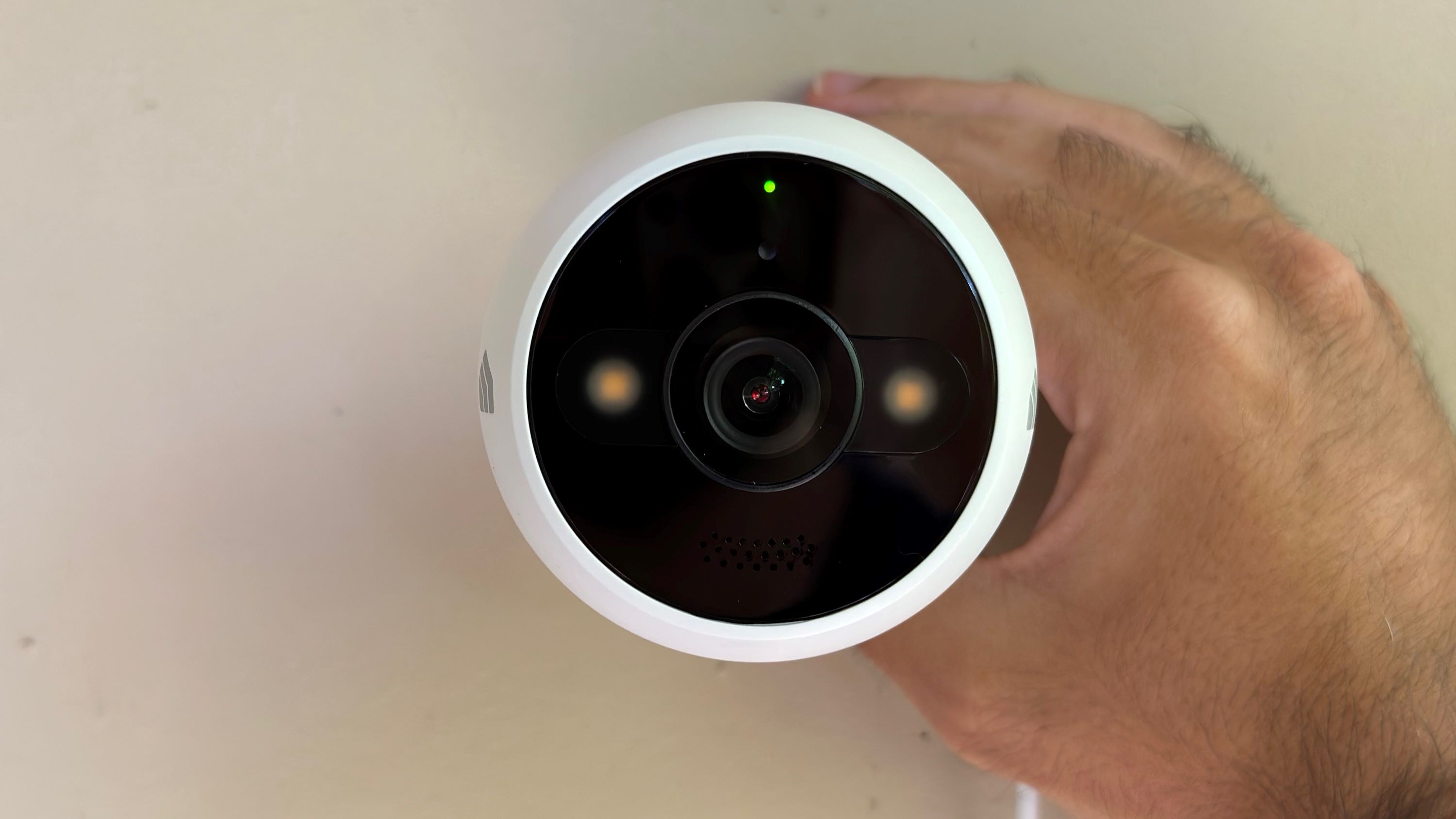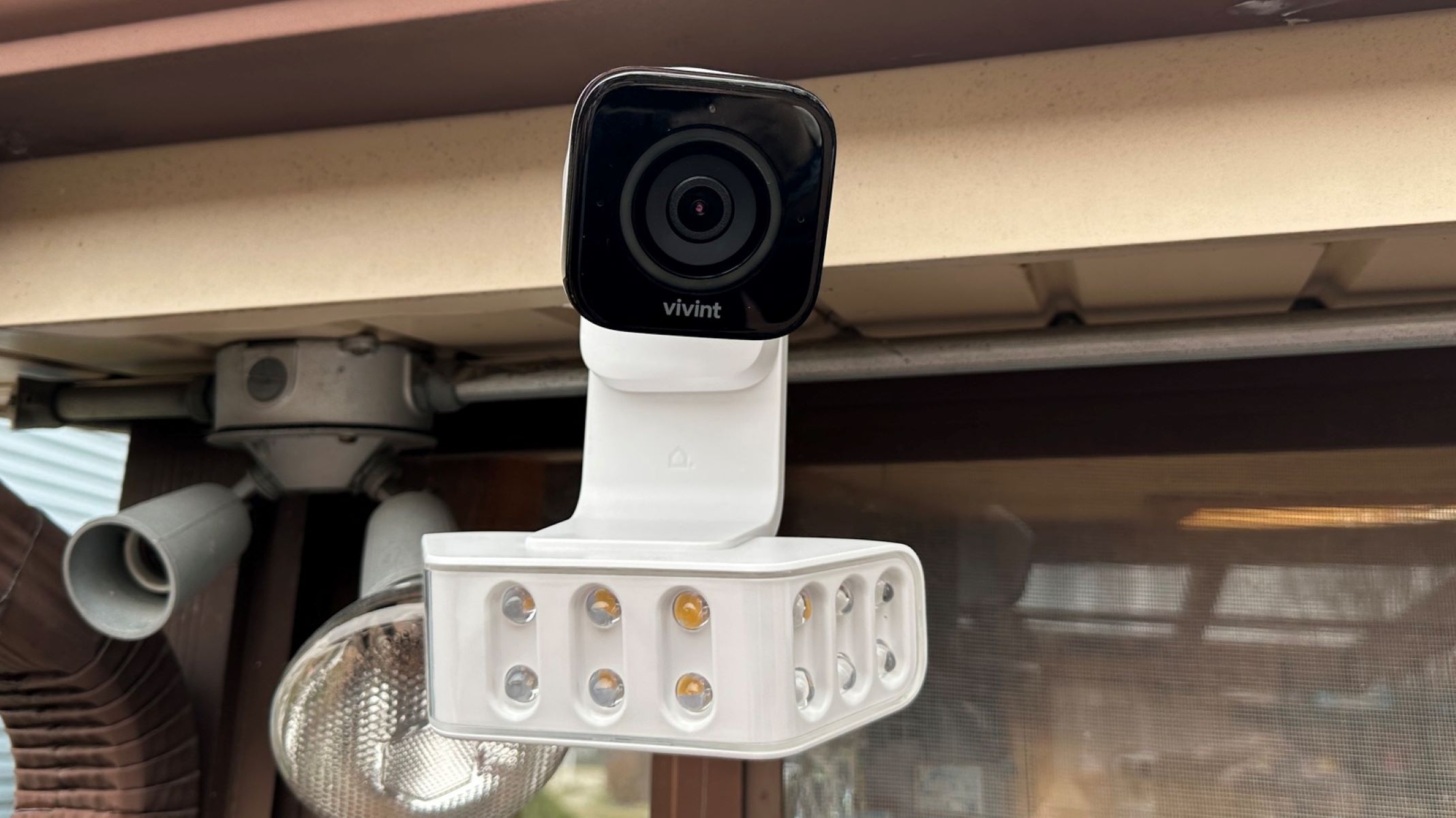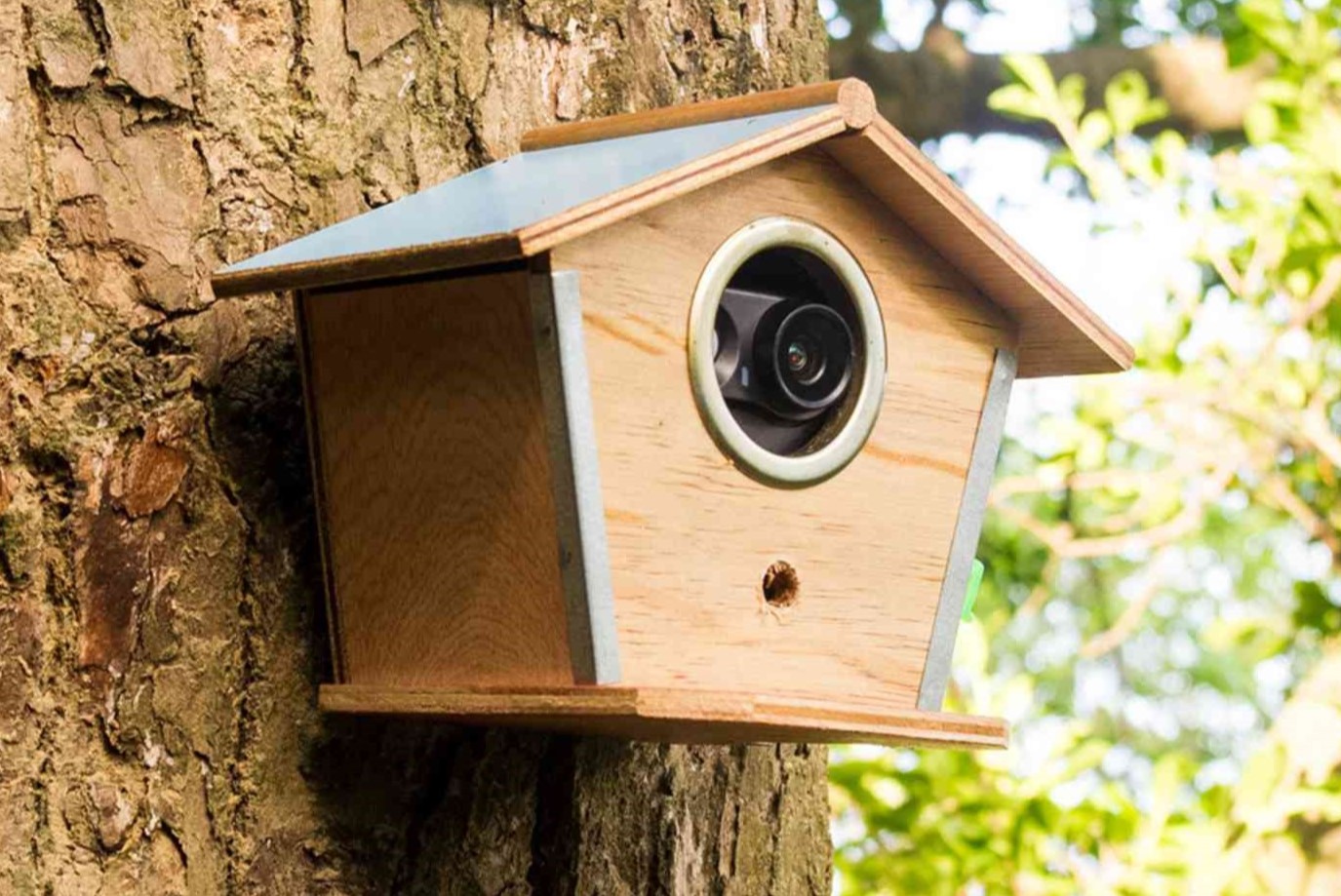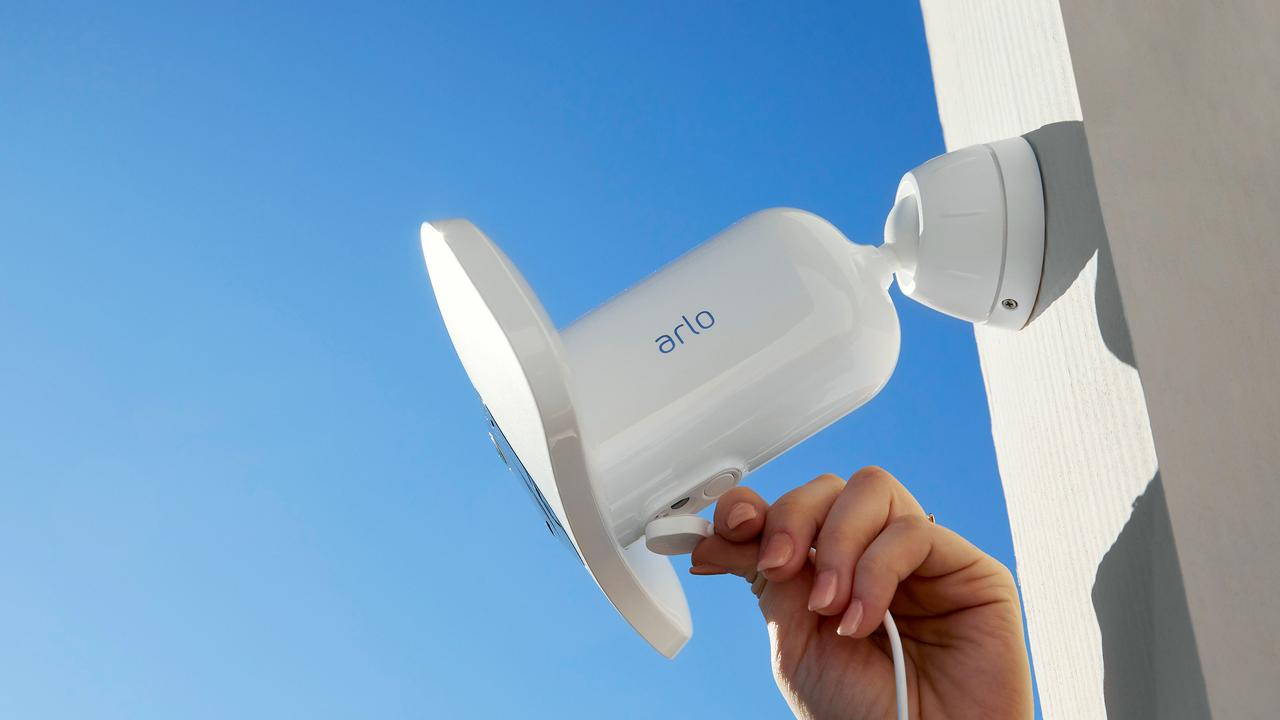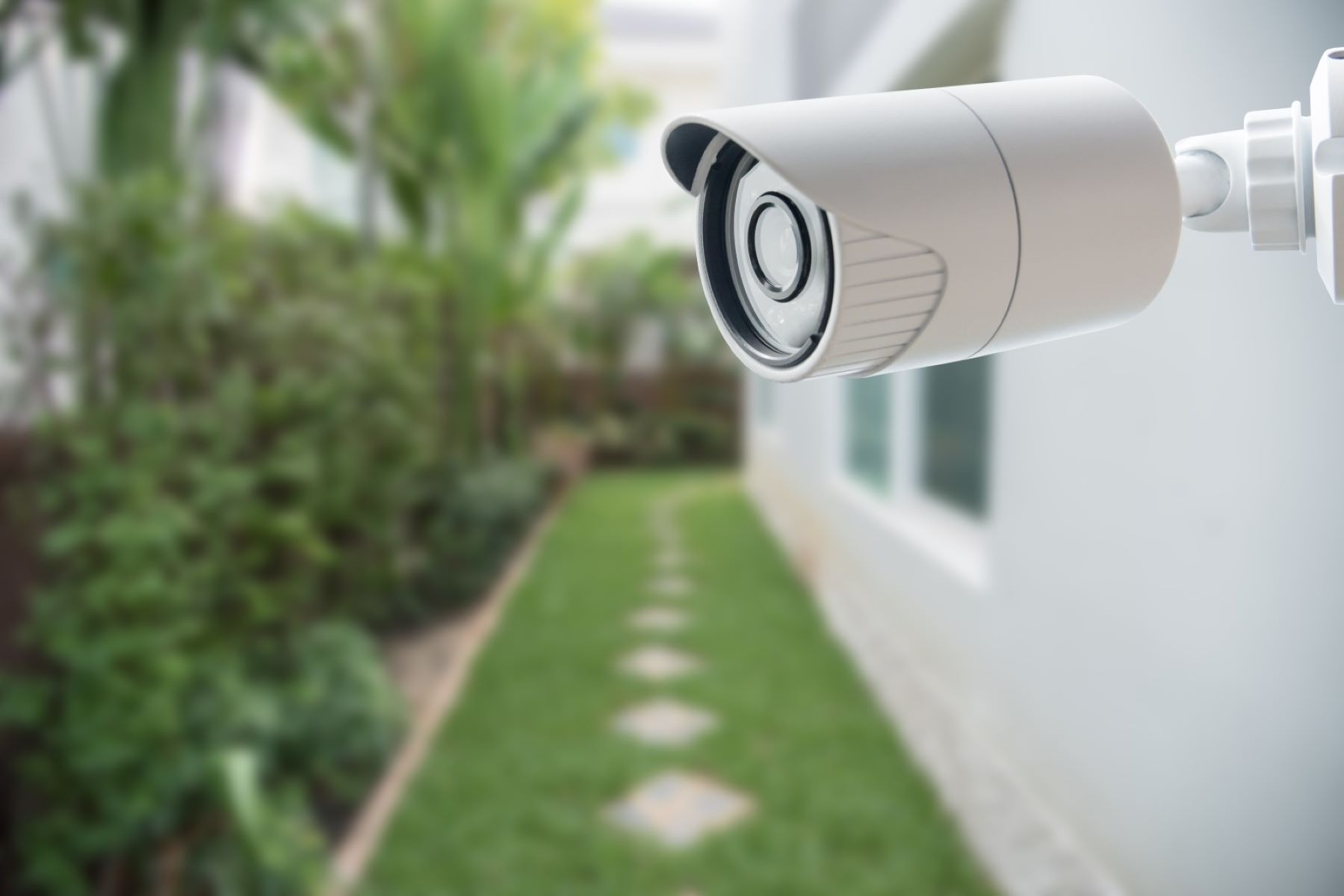Home>Home Security and Surveillance>How To Interfere With Home Surveillance Cameras
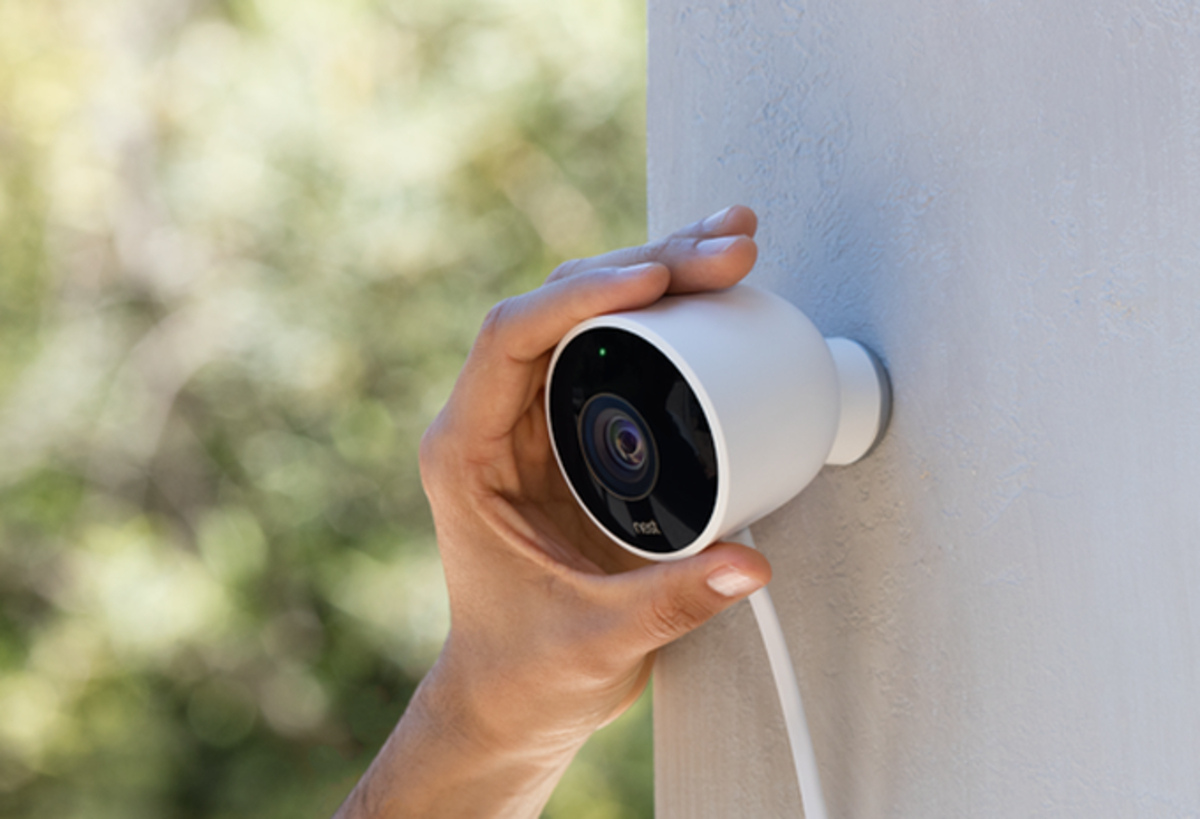

Home Security and Surveillance
How To Interfere With Home Surveillance Cameras
Modified: March 6, 2024
Learn how to interfere with home surveillance cameras and protect your privacy with our easy-to-follow guide on home security and surveillance. Safeguard your personal space now!
(Many of the links in this article redirect to a specific reviewed product. Your purchase of these products through affiliate links helps to generate commission for Storables.com, at no extra cost. Learn more)
Introduction
Welcome to the world of home security and surveillance. In today’s rapidly evolving digital age, the need to protect our homes and loved ones has become a top priority. This has led to the widespread installation of home surveillance cameras, which provide a sense of security and peace of mind.
However, while these cameras serve a vital purpose, there may be instances where you may want to interfere with them. Whether it’s to maintain privacy, conduct an experiment, or simply indulge in a bit of mischief, understanding the methods to interfere with home surveillance cameras can be both intriguing and useful.
In this article, we will delve into the world of home surveillance cameras, explore the risks associated with them, and discuss various methods you can use to interfere with their operation. Please note that this article is purely for informational purposes and we do not endorse or encourage any illegal activities.
So, if you’re curious to learn about the different techniques to interfere with home surveillance cameras, keep reading!
Key Takeaways:
- Protecting your home with surveillance cameras is important, but interfering with them without permission is illegal and unethical. Always respect privacy laws and seek proper authorization for any actions involving surveillance cameras.
- Understanding the risks and vulnerabilities of home surveillance cameras can help you protect your own security and privacy. Focus on securing your own camera system and respecting the privacy and rights of others.
Understanding Home Surveillance Cameras
Before we delve into the methods of interfering with home surveillance cameras, it’s important to have a basic understanding of how these devices work.
Home surveillance cameras, also known as security cameras or CCTV cameras, are electronic devices that are designed to monitor and record activities around a specific area, such as a home or property. They are typically connected to a recording device or a network, allowing homeowners to access the camera feed remotely through their smartphones, computers, or other connected devices.
Modern home surveillance cameras come in various types and designs, including outdoor cameras, indoor cameras, dome cameras, bullet cameras, and more. They are equipped with high-resolution lenses, infrared capabilities, motion sensors, and audio recording features, making them powerful tools for observing and deterring potential intruders.
These cameras are usually positioned strategically to capture a wide field of view, ensuring maximum surveillance coverage. Some advanced models also offer the ability to pan, tilt, and zoom, providing a greater level of control and flexibility in monitoring activities.
In addition to the cameras themselves, home surveillance systems often include a digital video recorder (DVR) or a network video recorder (NVR) to store and manage the recorded footage. These devices allow homeowners to review the footage, set up motion detection, and customize other settings to suit their specific security needs.
It’s worth mentioning that with recent advancements in technology, many home surveillance cameras are now integrated with smart home systems. This integration enables features such as facial recognition, voice control, and integration with other smart devices in the home, further enhancing the overall security experience.
Overall, understanding the basic functioning and components of home surveillance cameras is essential for comprehending the methods employed to interfere with them. Now that we have a clear understanding of how these cameras operate, let’s explore why someone might want to interfere with them.
Risks of Home Surveillance Cameras
While home surveillance cameras offer a range of benefits, it’s important to be aware of the potential risks and drawbacks associated with their use.
1. Privacy Concerns: One of the primary concerns when it comes to home surveillance cameras is the invasion of privacy. These cameras can capture and record activities not only within your property but also in the surrounding areas, potentially infringing upon the privacy of your neighbors or passersby. It’s crucial to be mindful of the camera’s field of view and ensure that it is not violating anyone’s privacy.
2. Hacking Attempts: Home surveillance cameras that are connected to the internet can be vulnerable to hacking attempts. If not properly secured, hackers may gain unauthorized access to the camera feed, compromising your privacy and security. It’s essential to choose cameras from reputable manufacturers and take necessary steps to secure your network and camera system.
3. False Sense of Security: While surveillance cameras can serve as a deterrent and provide evidence in the event of a break-in, they do not guarantee complete security. They are just one component of a comprehensive home security system. Relying solely on cameras without adequate alarms, locks, and other security measures can create a false sense of security.
4. Legal Considerations: It’s important to be aware of the legal implications of using home surveillance cameras. Laws and regulations regarding the use of surveillance cameras vary from place to place. Understanding your local laws can help you avoid legal issues and ensure that you are using the cameras in a lawful manner.
5. Technical Limitations: Home surveillance cameras may have certain limitations in terms of their coverage area, image quality, and functionality. Factors such as lighting conditions, weather, and physical obstructions can impact the effectiveness of the cameras. It’s crucial to choose cameras that are suitable for your specific needs and address any limitations through proper placement and configuration.
By understanding these risks and taking necessary precautions, you can mitigate potential drawbacks and ensure that your home surveillance system functions effectively while respecting privacy and security concerns.
Interfering with Home Surveillance Cameras
While it is important to emphasize that interfering with home surveillance cameras should not be done with malicious intent or for illegal activities, understanding the methods can provide insights into their vulnerabilities and help address potential security weaknesses. Here are several methods you can employ to interfere with home surveillance cameras:
Method 1: Physical Obstruction
One of the simplest and non-invasive methods to interfere with home surveillance cameras is through physical obstruction. By strategically placing objects such as plants, curtains, or blinds, you can block the camera’s field of view, rendering it ineffective in capturing clear images or footage. However, it’s crucial to consider the legality and ethical implications of obstructing someone else’s camera, especially if it invades their privacy.
Method 2: Jamming Signals
Jamming signals is a more advanced technique that involves disrupting the camera’s ability to transmit or receive signals. Using a signal jammer device, you can interfere with the Wi-Fi or wireless signals that the camera relies on to send the feed to the recording device or network. It’s important to note that signal jamming is illegal in many countries without proper authorization, as it can disrupt not only the surveillance cameras but also other wireless devices in the vicinity.
Method 3: Using Infrared Lights
Many home surveillance cameras utilize infrared technology to enable night vision capabilities. By shining bright infrared lights towards the camera, you can overwhelm its sensors, making it difficult for the camera to capture clear images in low-light conditions. This method can be effective at rendering the camera’s night vision useless but may not be as effective during daylight hours.
Method 4: Hacking the Camera System
While hacking is illegal and unethical, understanding the vulnerabilities of home surveillance camera systems can help you strengthen the security of your own system. It is crucial to secure your own camera system and ensure that it is not susceptible to hacking attempts. This includes changing default passwords, updating firmware regularly, and implementing proper network security measures.
Method 5: Spoofing the Camera Feed
By creating a replica or imitating the camera feed, it is possible to deceive those monitoring the cameras. This method involves skilled knowledge of network protocols and forging IP addresses to mimic the camera’s feed. It’s important to mention that spoofing camera feeds is illegal and should not be attempted without proper authorization.
It is essential to remember that interfering with home surveillance cameras without permission is unlawful and goes against ethical principles. It’s paramount to respect the privacy and security of others. If you have concerns about surveillance cameras, it is recommended to address them through legal and appropriate channels.
Read more: How To Waterproof A Security Camera
Method 1: Physical Obstruction
Physical obstruction is a non-invasive and relatively simple method to interfere with home surveillance cameras. By strategically placing objects or obstacles in the camera’s field of view, you can block its line of sight, making it difficult for the camera to capture clear images or record accurate footage.
Here are a few techniques you can employ in this method:
1. Use Plants and Shrubs
One effective way to obstruct a surveillance camera is by utilizing the natural cover of plants and shrubs. By strategically placing potted plants or tall bushes in front of the camera, you can create a visual barrier that interferes with its field of view. Opt for tall and bushy plants that can effectively block the camera without drawing too much attention.
2. Install Curtains or Blinds
If the camera is installed indoors or near a window, installing curtains or blinds can be an effective way to obstruct its view. Adjusting the position of the curtains or closing the blinds can block the camera’s line of sight, preventing it from capturing clear images or footage. This method allows you to have control over when and how the camera observes your activities.
3. Use Reflective Surfaces
An innovative approach to physically obstructing a surveillance camera is by utilizing reflective surfaces. Placing mirrors, reflective sheets, or even shiny objects near the camera can cause glare and create visual distortion, making it challenging for the camera to capture clear images. Be cautious when using this method, as it may draw attention to the obstruction.
Read more: How To Hide An Outdoor Camera
4. Utilize Temporary Obstacles
If you want a more flexible approach, using temporary obstacles can be an effective method. For example, placing a ladder, a piece of furniture, or even a decorative object in front of the camera can obstruct its line of sight temporarily. This allows you to adjust the obstruction as needed and remove it when desired.
It is important to note that physically obstructing someone else’s surveillance camera without consent is considered trespassing and can have legal implications. Always respect others’ privacy and adhere to local laws and regulations regarding the use of surveillance cameras.
Physical obstruction is a method that focuses on visual interference, preventing the camera from capturing clear images or accessing certain areas. As technology advances, some surveillance cameras may have features to counter these obstructions, such as wide-angle lenses or motion sensors. Therefore, this method may be more effective for older or basic camera models.
Remember, the intention behind interfering with home surveillance cameras should be legal and ethically sound. Understanding the vulnerabilities and limitations of surveillance cameras can help you take appropriate measures to protect your own privacy and security.
Method 2: Jamming Signals
Jamming signals is a more advanced method used to interfere with home surveillance cameras. It involves disrupting the camera’s ability to transmit or receive signals, rendering it unable to send the feed to the recording device or network. It’s important to note that signal jamming is illegal in many countries without proper authorization, as it can disrupt not only the surveillance cameras but also other wireless devices in the vicinity.
Here are some key points to understand about signal jamming:
Understanding Wireless Signals
Home surveillance cameras often rely on wireless signals, such as Wi-Fi or Bluetooth, to transmit the camera feed to a recording device or network. Jamming a wireless signal interrupts the communication between the camera and the receiving device, preventing the transmission of the video feed.
Signal Jamming Devices
Signal jamming devices, also known as jammers, are specialized electronic devices designed to emit radio frequency signals that interfere with wireless communications. These devices can disrupt different frequencies, depending on the type of signal you want to jam.
Read more: How To Choose Security Cameras
Legal Considerations
It’s important to note that signal jamming is illegal in many countries, as it can interfere with essential services and public safety communications. Unauthorized signal jamming can disrupt emergency services, cell phone signals, and other wireless devices. It’s crucial to understand and comply with local laws and regulations regarding the use of signal jamming devices.
Authorization and Exceptions
In some cases, signal jamming may be permitted under certain circumstances. For example, authorized personnel, such as law enforcement agencies or government agencies, may use jamming devices during specific operations. However, this is strictly regulated and requires proper authorization.
Ethical Considerations
Using signal jammers to interfere with home surveillance cameras raises ethical concerns. It’s important to consider the impact on others, including the potential disruption of their security systems and invasion of their privacy. Privacy should be respected, and interfering with someone else’s camera system without proper authorization is both unethical and illegal.
It’s crucial to reiterate that the information provided here is for educational purposes only. Unauthorized signal jamming is illegal and can have serious consequences. It’s essential to familiarize yourself with the laws and regulations in your jurisdiction and use any technology responsibly and lawfully.
Before considering any interference methods, make sure to assess the potential risks and consequences involved. It is always recommended to address any concerns regarding surveillance cameras through legal and appropriate means.
Method 3: Using Infrared Lights
Using infrared lights is a technique to interfere with home surveillance cameras that rely on infrared technology for night vision capabilities. By shining bright infrared lights towards the camera, you can overwhelm its sensors and make it difficult for the camera to capture clear images in low-light conditions.
Read more: How To Hack Into Security Cameras
Understanding Infrared Technology
Many modern surveillance cameras are equipped with infrared LEDs (Light-Emitting Diodes) that emit invisible infrared light. This light is outside the visible spectrum but can be detected by the camera’s sensors, allowing it to capture clear images even in complete darkness.
Interfering with Infrared Sensors
To interfere with the camera’s infrared capabilities, you can use powerful infrared lights or floodlights. By shining these lights towards the camera, you flood the area with intense infrared illumination, overwhelming the camera’s sensors and causing the image to appear washed out or distorted.
Placement and Angle
To maximize the interference, place the infrared lights in close proximity to the camera and direct them towards the lens. Experiment with different angles and distances to find the most effective position for interference. Keep in mind that the effectiveness of this method may vary depending on the specific camera model and its sensitivity to infrared light.
Daytime Limitations
It’s worth noting that using infrared lights to interfere with surveillance cameras is most effective during nighttime or low-light conditions when the camera relies heavily on infrared illumination. During the daytime, when there is ample ambient light, the interference may be less noticeable or ineffective.
Read more: How Clean An Outdoor Camera
Legal and Ethical Considerations
Interfering with surveillance cameras, even through the use of infrared lights, can raise ethical and legal concerns. Before attempting this method, it is essential to ensure that you are not violating any laws or infringing upon others’ privacy. Always respect the boundaries of others and use any interference method responsibly and lawfully.
Remember, the intention behind learning about these interference methods should be for educational purposes only. Misusing this knowledge for illegal activities or invading privacy is unethical and can have serious legal consequences.
Lastly, it is crucial to emphasize that the best approach to resolving concerns about surveillance cameras is through legal and appropriate channels. If you have any issues or objections regarding a surveillance camera, it’s advisable to address them through proper communication and potentially involve local authorities if necessary.
Method 4: Hacking the Camera System
It is important to note that hacking into someone else’s camera system without their permission is illegal and unethical. However, understanding the vulnerabilities of home surveillance camera systems can help you take measures to secure your own system and protect your privacy. Here are some aspects to consider:
Securing Your Own Camera System
One of the best ways to protect your own camera system is by taking measures to secure it against potential hacking attempts. This includes:
- Changing default usernames and passwords to strong, unique ones
- Regularly updating the firmware of your cameras and recording devices
- Using secure networks and encrypting your camera feeds
- Implementing strong network security measures, such as firewalls and intrusion detection systems
Vulnerabilities to Watch Out For
Surveillance cameras, like any other internet-connected devices, can be vulnerable to hacking attempts. Some common vulnerabilities include:
- Outdated firmware: Manufacturers often release firmware updates that address security vulnerabilities. Failing to update the firmware leaves your camera system exposed to potential attacks.
- Weak passwords: Many people neglect to change the default usernames and passwords, making it easier for hackers to gain unauthorized access.
- Network vulnerabilities: Insecure networks or unencrypted camera feeds can allow hackers to intercept the communication and gain access to the camera system.
Penetration Testing and Security Audits
If you are concerned about the security of your camera system, consider conducting a penetration test or a security audit. These exercises involve assessing the system’s vulnerabilities and identifying potential weak points that could be exploited by hackers. It is crucial to hire reputable and authorized professionals who specialize in cybersecurity to perform these tests.
Ethical and Legal Considerations
Hacking someone else’s camera system without proper authorization is illegal and unethical. It is essential to respect the privacy and security of others and abide by the laws and regulations in your jurisdiction. Any attempts to gain unauthorized access to someone else’s camera system can lead to severe legal consequences.
By understanding the vulnerabilities and risks associated with home surveillance camera systems, you can take appropriate measures to secure your own system and protect your privacy. Remember, the intention behind learning about hacking techniques should be for educational purposes and self-defense, rather than engaging in illegal activities.
Method 5: Spoofing the Camera Feed
Spoofing the camera feed is a technique that involves creating a replica or imitating the camera’s feed to deceive those monitoring the cameras. This method requires a deep understanding of network protocols and the ability to forge IP addresses or manipulate data packets. It is important to note that spoofing camera feeds without proper authorization is illegal and unethical.
Understanding Camera Feed Spoofing
Camera feed spoofing involves intercepting the camera’s video feed and replacing it with a counterfeit feed that displays fabricated or altered footage. By manipulating network traffic and forging IP addresses, an attacker can trick those monitoring the cameras into viewing manipulated images or videos.
Read more: How To Defeat Security Cameras
Potential Risks and Consequences
Spoofing camera feeds poses significant risks and is illegal in most jurisdictions. Some potential risks include:
- Security Breach: Spoofing camera feeds can compromise the security of a location by providing false information about activities or potential threats.
- Privacy Invasion: Manipulating camera feeds can invade the privacy of individuals within the camera’s range, leading to violations of personal privacy rights.
- False Information: Altering camera feeds can result in false evidence or misleading information that can have serious consequences in legal or security investigations.
Read more: How Clean An Outdoor Camera
Legal and Ethical Considerations
Spoofing camera feeds without proper authorization is illegal and unethical. It is important to respect the privacy and security of others and to adhere to laws and regulations governing the use of surveillance systems.
Protecting Against Camera Feed Spoofing
To protect your own camera system from potential spoofing attacks, consider the following steps:
- Secure Networks: Implement secure Wi-Fi networks and encryption protocols to protect camera feeds from unauthorized access.
- Regularly Update Firmware: Keep your camera firmware up to date to ensure that manufacturers’ security patches are applied.
- Change Default Settings: Modify default usernames and passwords on cameras and recording devices to prevent unauthorized access.
- Monitor Network Traffic: Regularly monitor your network for any signs of suspicious activity and use intrusion detection systems if necessary.
It is essential to emphasize that the intention behind understanding spoofing techniques should be for educational purposes only. Misusing this knowledge for illegal activities or invading privacy is highly unethical and can result in severe legal consequences.
If you have concerns about a surveillance camera or believe there are vulnerabilities in a camera system, it is advisable to address the issue through legal and appropriate channels, such as contacting the camera system owner or local authorities.
Legal and Ethical Considerations
When it comes to interfering with home surveillance cameras, it is crucial to understand and respect the legal and ethical considerations involved. Engaging in any activities that compromise the privacy, security, or rights of others is both illegal and unethical. Below are some key points to consider:
Read more: How To Reset A Security Camera
Respecting Privacy Laws
Privacy laws vary from country to country and even within different regions. It is essential to understand and adhere to the legal requirements and limitations regarding the use of surveillance cameras. Invading someone’s privacy by interfering with their camera system without their explicit consent can lead to severe legal consequences.
Obtaining Proper Authorization
If you have legitimate reasons to interfere with a surveillance camera, it is important to seek proper authorization from the camera owner or relevant authorities. For example, if you need to obstruct or temporarily disable a camera for maintenance or repairs, obtaining permission ensures that you are acting within legal boundaries.
Preventing Harm to Others
Interfering with home surveillance cameras should never cause harm to individuals or their property. It is essential to prioritize the safety of others and avoid engaging in activities that may lead to accidents, property damage, or endangering someone’s well-being.
Seeking Legal and Appropriate Channels
If you have concerns or objections regarding the use of surveillance cameras, it is recommended to address them through legal and appropriate channels. This could involve engaging in open dialogue with the camera system owner, discussing the issue with local authorities, or seeking legal advice to understand your rights and options.
Read more: How To Destroy A Security Camera
Promoting Ethical Behavior
Respecting the privacy and security of others is fundamental to ethical behavior. It is important to treat others as you would like to be treated and to avoid engaging in activities that may infringe upon their rights or invade their privacy. Protecting the ethical standards of your own behavior sets a positive example for others as well.
Remember, the intention behind learning about interference methods is for educational purposes only, to understand vulnerabilities and take appropriate measures to protect your own camera system. It is never acceptable to engage in illegal activities or invade someone else’s privacy without their consent.
By respecting the legal and ethical boundaries, you can ensure that your actions align with principles of privacy, security, and respect for others.
Conclusion
Home surveillance cameras play a vital role in ensuring the security and peace of mind of homeowners. While they offer a range of benefits, it is important to be aware of the potential risks and vulnerabilities associated with their use. Interfering with home surveillance cameras should only be done with proper authorization and for legal and ethical purposes.
In this article, we have explored various methods of interfering with home surveillance cameras, including physical obstruction, signal jamming, using infrared lights, hacking the camera system, and spoofing the camera feed. It is crucial to note that some of these methods are illegal and unethical, and they should not be pursued without proper authorization.
Legal and ethical considerations should always guide our actions when it comes to surveillance cameras. Respecting privacy laws, obtaining proper authorization, and prioritizing the safety and well-being of others are essential principles to abide by. It is recommended to address concerns about surveillance cameras through appropriate channels, such as open dialogue, contacting the camera system owner, or involving local authorities.
Ultimately, the best approach to safeguarding your own security and privacy is through adopting best practices for securing your own camera system, staying informed about the latest security measures, and respecting the privacy and security of others. By understanding the vulnerabilities and risks associated with home surveillance cameras, you can make informed decisions to protect your own security and privacy.
Remember, the intention behind learning about interference methods should primarily be for educational purposes and self-defense. Engaging in any activities that are illegal, unethical, or invasive of others’ privacy is not acceptable. By promoting responsible and lawful use of surveillance systems, we can all contribute to a safer and more secure environment for ourselves and others.
Frequently Asked Questions about How To Interfere With Home Surveillance Cameras
Was this page helpful?
At Storables.com, we guarantee accurate and reliable information. Our content, validated by Expert Board Contributors, is crafted following stringent Editorial Policies. We're committed to providing you with well-researched, expert-backed insights for all your informational needs.
